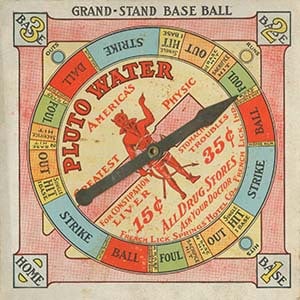
Trade cards were a visually attractive and affordable form of advertising. Advances in printing technology led to the development of color lithography, which allowed trade cards to be printed in full color with a level of photographic realism unrivalled by other printing methods. Printers offered cards in a variety of sizes and shapes. Potential advertisers could choose stock images as illustrations, or unique designs could be developed for an additional cost. The subject matter on the cards moved beyond simply depicting shop exteriors or signs and began featuring creative interpretations of products as well as a variety of scenes and decorative motifs. As the preparation and distribution of medical drugs became a more lucrative business, trade cards served as an important way for pharmacy owners to differentiate themselves from their competitors.
Trade cards reached their peak of popularity in the 1880s. They lost their dominance as an advertising medium by the early 20th century, when developments in printing improved the quality and reduced the cost of magazine and newspaper advertising. Over the last fifty years, William H. Helfand amassed a collection of medical and pharmaceutical material that he has generously given to the Library Company. The Helfand Collection provides insight into advertising practices and also serves as a lens through which to consider other aspects of American history including the history of pharmacy and medicine, the growth of industry and commerce, the details of day-to-day life, and historical perceptions of “the other.”
Curated by Cheryl Klimaszewski, 2008.
Resources
Nineteenth-Century Pharmacists’ Trade Cards from the William H. Helfand Collection Online Exhibition


